Mars in 2012 Page 1 
Mars reaches opposition on 3 March 2012.
The simulations are from Calsky and show Mars as it was expected to be seen through a 10-inch telescope at the date and time indicated. These simulations are all on the same scale and do not reflect the changing apparent size of the planet as its distance from us changes. My images do reflect that change and can most easily be seen on my page for the 2005/6 season. I do not know what controls the orientation of the Calsky images, but I align my camera with the telescope which itself is aligned with the pole, so my images should all be the same way up, except that the the polar axis of Mars will appear to change somewhat during a season (it is tilted at 25° to the plane of the martian orbit).
I have a good collection of images over the last four oppositions, so this year I am starting to experiment with new methods. In previous years all my colour pictures, and most of my images in infra-red were taken with my ToUcam (740K until 2007, and the 840K from 2009). Since then I have purchased two cameras from The imaging source (the DFK 21AF04 in colour and the DMK 21AF04 in monochrome). These don't link as easily with my ×2 SLR adaptor lens as the ToUcams did (I rehoused them with the right thread) so it occurred to me to use my Meade ×3 barlow and my ×5 Powermate instead.
This page covers initial experiments with the two new cameras. Page 2 shows some more experiments 15 nights later comparing my old ToUcam with the new cameras directly.
Mars rotates in a little over 24 hours, so its features move noticeably over an observing period. My pictures were not necessarily taken in the sequence I show them here, so I have put the time they were taken at the bottom of the picture (HH:MM UT).
25th February 2012.
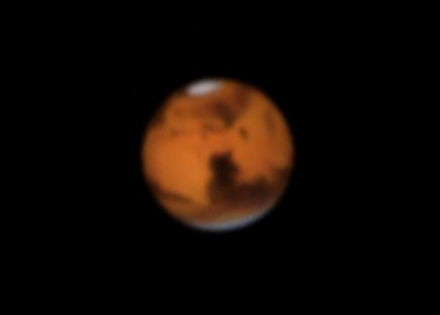
|
This simulation shows Mars as it should appear in a 10-inch telescope at 23:07 UT on 25th February 2012 which is about half-way through my observing session. Move your mouse pointer over the image to see some of the major features identified. |
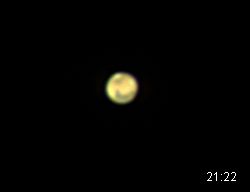  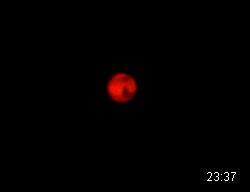
|
Firstly, images taken at prime focus of my LX200. You can see how small the image is. The first image, on the left, was taken with the DFK camera in colour, the second was taken with the DMK camera and an infra-red pass filter. Finally, on the right is the infra-red image taken with the colour camera. The filter passes light of wavelength greater than 635 nm, and the camera has a IR-block filter built in which blocks light of wavelength greater than 700 nm. As you can see most of the light comes through the red filter on the chip, but in fact a very small amount comes through the green filter, but none through the blue filter. |
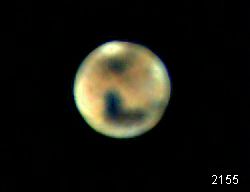 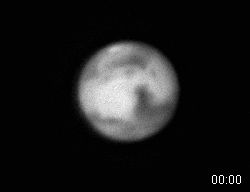
|
Secondly, images taken with the ×3 barlow. (This is the cheaper of the two ×3 barlows that Meade sell, and not the one intended for the LX200. I don't know what the difference is.) You can see that the IR image was taken significantly later than the one in visible light (about 2 hours later in fact). |
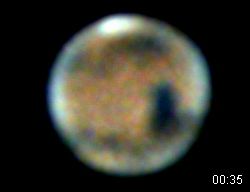 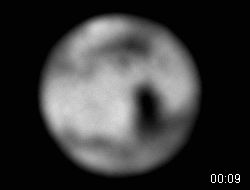 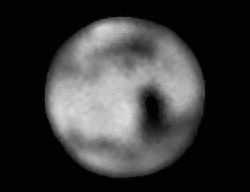
|
Thirdly, images taken with the ×5 Powermate. The first image is in the visible, and the second in the infra-red. The third image is the second one enhanced (possibly over-enhanced) with Focus Magic. (Focus Magic implements a deconvolution algorithm which can undo the effect of blurring in an image. It seems to me that oversampling the image like this is equivalent to out-of-focus blur which is what Focus Magic corrects.) |
 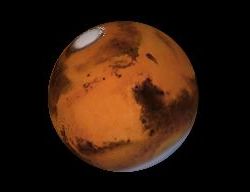 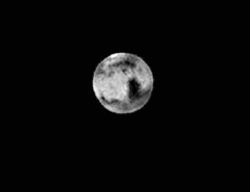
|
I thought it might be interesting to see what would happen if I enhanced the ×5 IR picture out of all recognition. The first picture here has been enhanced in Focus Magic twice, firstly with a blur width of 6 pixels and then with 15. The picture really looks overdone, but compare it with the centre picture which is the "spacecraft" simulation from Calsky. Finally the third picture is the first reduced to 40% to make it the size I would have got with the ×2 lens that I have used in previous years. |
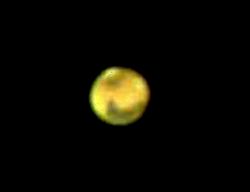 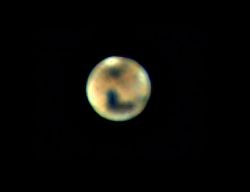 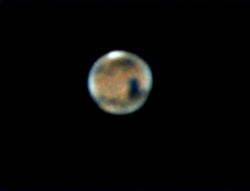
|
Finally, here are the colour pictures at the three scales reduced or enlarged to the size they would have had with the ×2 SLR lens that I have used in previous years. From left to right, ×1, ×3, and ×5. |
Home Back to Mars Page 2
















